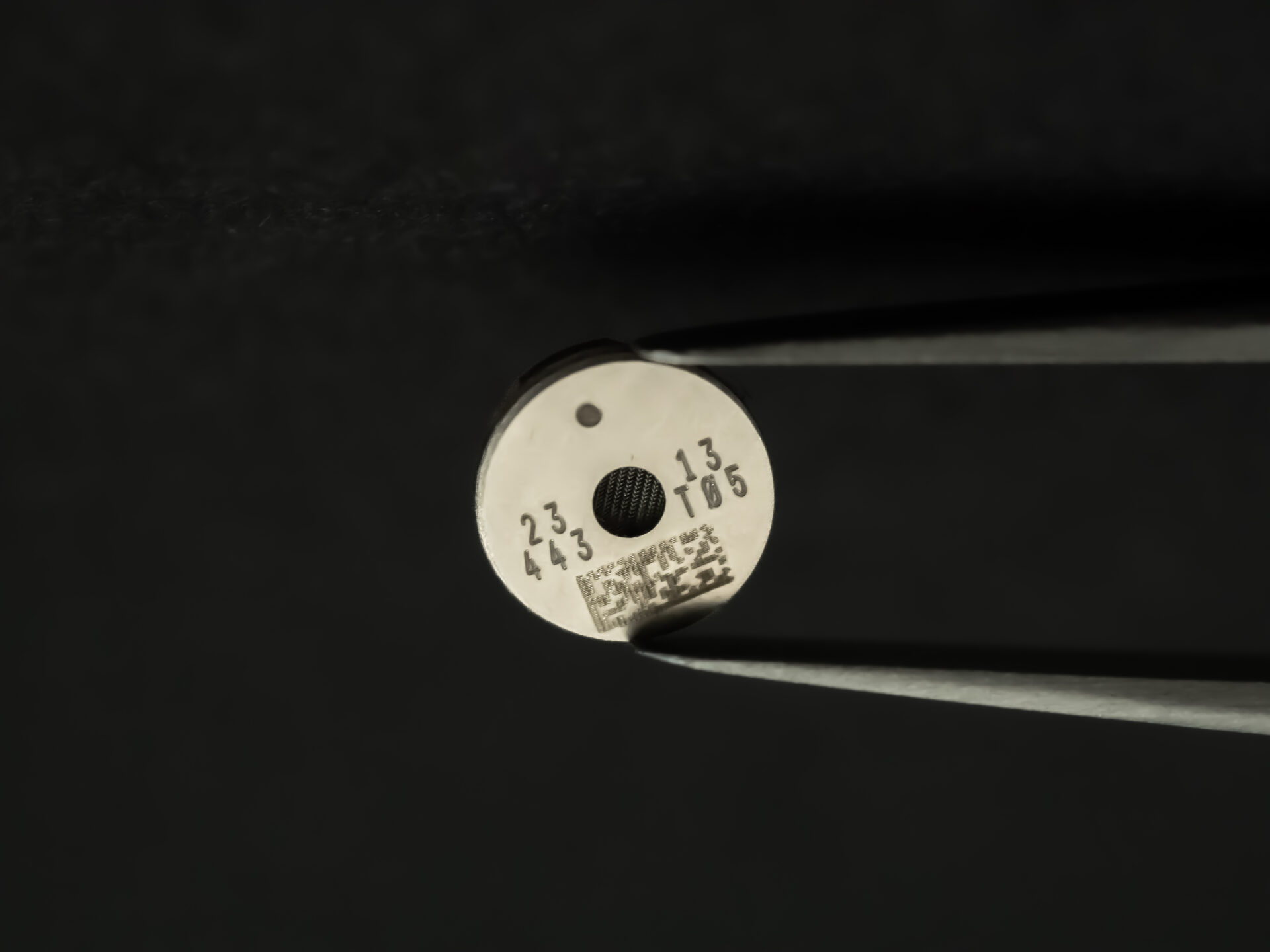Speakers have changed dramatically since the first patents from Werner von Siemens and Alexander G. Bell in the 1870s. Here is how speakers evolved throughout the centuries, leading to the development of the most revolutionary of them all: MEMS speakers.
Everyone uses electro-acoustic transducers, such as speakers and microphones daily. There are multiple microphones inside every mobile phone and at least one speaker inside every single earphone. Although most people understand that speakers are an important electronics component, few are aware of how their evolution throughout the years has shaped product innovations. Following the miniaturization trend, led by electronics and integrated circuits, simply known as “silicon technology”, speakers are becoming smaller, louder, and more robust than ever before. Without these developments, earphones would remain wired and hearing aids would be pricey and inaccessible.
Let’s take a trip down history lane and review the major stepping stones that brought us to where we are today regarding electro-acoustic transducers, with a focus on the traditional electro-dynamic speaker principle and MEMS speakers, the 21st century components with a mission to revolutionize the audio industry. Before we begin, I would like to mention that there is a glossary at the end of the article in case of confusion.
Glossary
“Speaker” / ”Loudspeaker” can refer to the whole box, including an electro-acoustic transducer, but it is also used to describe the transducer itself. In the article, I used “loudspeaker” for the whole construction and “speaker” for the core part (the transducer) of a loudspeaker.
“Driver” is a term that can be used as well for the amplifier (driving the speaker), as for the transducer. Which makes this term especially prone to confusion among engineers. In this article this term is therefore not used.
“Receiver” can be used to describe a “microphone” (receiving the sound), but also for certain types of “speakers” (receiving the speech/music signal from someone else), like in earphones or for the speaker at the top of the mobile-phone.
“Balanced armatures” are often abbreviated by “BA”. Some also call them “BA-receivers”.
Speakers
First patented in 1870s
The first patents for electrodynamic transducers were filed in the 1870s by Werner von Siemens and Alexander Graham Bell, for example [1]. The important “unit” dB (decibel – a tenth of a “Bel”) is named after Mr. Bell. This working principle relies on the Lorentz force generated by a current flowing through a wire inside a magnetic field. It also works the other way around and can create a current through a wire when it is moved in a magnetic field (for example, for a microphone). It is important to note that the first patents were not yet of a proper voice coil system, but specified less efficient ways how the Lorentz force could create sound. Nowadays, if one learns about speakers, they will be shown a picture of the electrodynamic voice coil principle, as it is the predominantly used speaker construction. Despite that, the first patents did not have a proper membrane that acted as a diaphragm but were way more rigid and less optimized to move air.
The history of speakers and microphones is very strongly tied to the history of electronics, especially telecommunication. After all, why would anyone need a speaker if there is no electric signal to play? Moreover, most engineers working with speakers and microphones in the past were electronic engineers. This explains why so many models that were developed for those devices have a clear electronic modeling view.
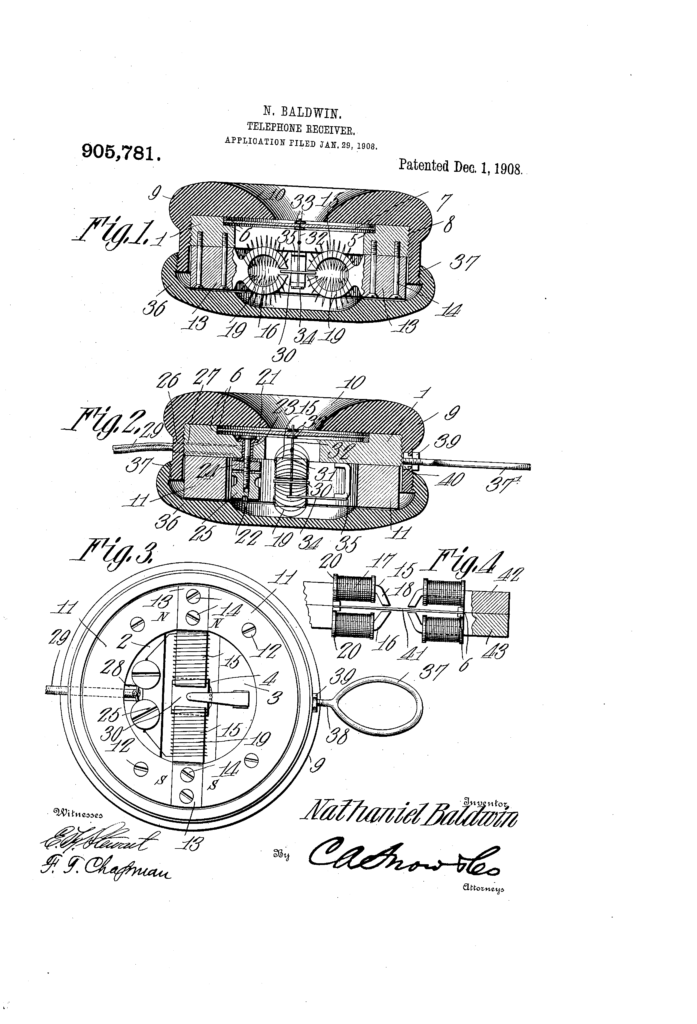
Voice Coil Principle 1898 and the Balanced Armature Principle 1908
The “traditional” voice coil was first patented in 1898 but was not actually implemented before the 1920s. The next big step for transducers followed in 1908 by the patenting of the balanced armature (BA) principle [2]. Modern forms typically follow the 1963 patent [3]. This is interesting because, nowadays, BA speakers are often deemed “exotic”. Looking at the historical records, however, it is clear that they are both equally old.
While the voice coil system is used in most modern speakers, BA speakers are mainly used for hearing aids and high-end in-ear monitors for musicians.
Thiele and Small 1950/60s
Thile and Small are two influential electro-acoustic engineers who will forever be known for the so-called “Thiele-Small-parameters”. They separately worked on the modeling of loudspeakers by using electronic components. This exploits what is known as analogies, similarities in the differential equations of the three relevant domains (electronic, mechanical, and acoustical). They did not invent this; it was already known before [4, 5], but both took it to a new level and explained the practical applications and measurements. The Thiele-Small parameters are a set of values that characterize a given speaker (resonance frequency, Q-factors, and force factor, to name the most important ones). They can be used for the box design and for assessing the applicability of the speaker for a specific use case and context. They can be found in almost every speaker data sheet and certainly in every professional HiFi-speaker data sheet. Thile and Small’s contributions really helped to deepen the understanding, modelling and subsequently the efficient development of speakers.
MEMS speakers 2000s
The first papers about MEMS speakers working with various transducer principles were published around 2010. USound’s first patents were filed shortly after, in 2014. Our main contribution was/is the replacement of the electrodynamic motor with a MEMS device, while retaining the traditional diaphragm, which has not been done before.
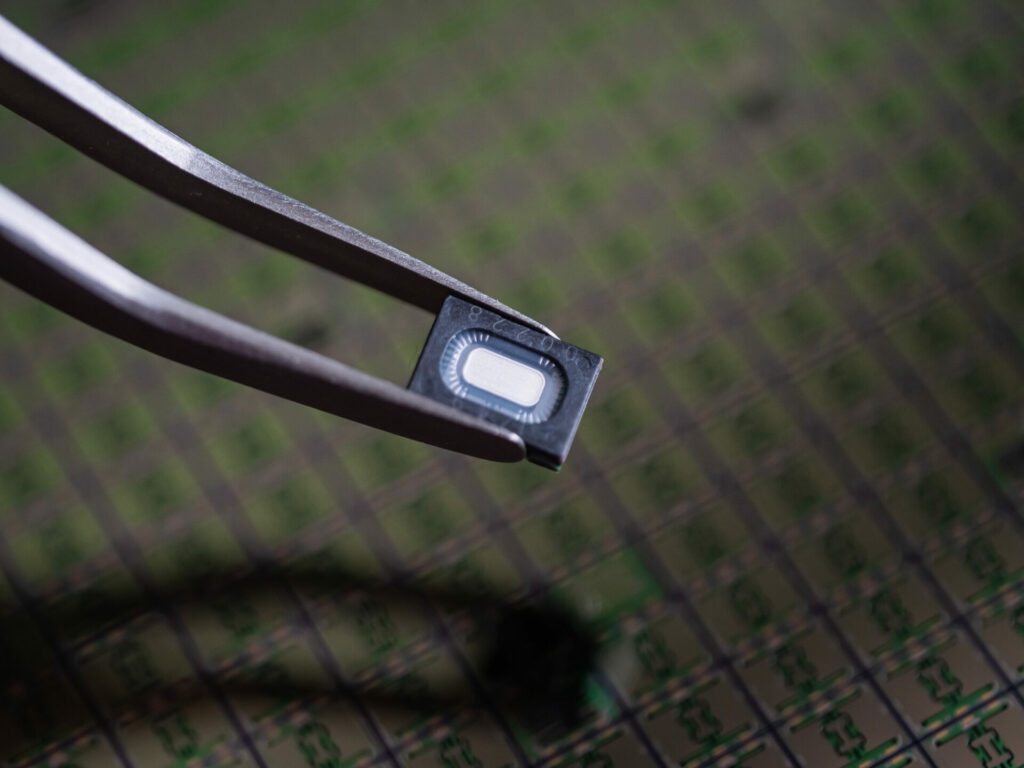
It must be said that “MEMS” is not a working principle like the “electro-dynamic” or “piezo-electric”. Instead it just specifies that the piece that transforms the energy from electrical to mechanical (the “motor”) is produced by MEMS processes. MEMS devices are built on silicon technology, similar to the manufacturing of ICs. However, instead of creating miniature (analog and digital) circuits, they are used to produce micro-electro-mechanical systems (“MEMS”).
Over the last decades, the traditional sensors and actuators in mobile devices have been gradually replaced by MEMS devices (accelerometers, gyroscopes, micro-mirrors in cameras, to name a few). Silicon technology offers high scalability, miniaturization, high power efficiency and high accuracy, all aspects that align perfectly with the requirements in mobile devices. MEMS speakers are no exception and will, little by little, replace the existing speakers in those applications.
While electrostatic, electrodynamic, and other types of MEMS speakers have been published in research, the most promising form is the piezoelectric principle. Looking at the current landscape of developed MEMS speakers, the ones operating with this type are the only ones meeting the market needs. Regardless, the advantages of the MEMS technology, with miniaturization, high volume production capabilities, and subsequently low costs, will sustainably change the speaker history in the future.
History of Applications for Speakers
The history of speakers is very much intertwined with the history of microphones, especially with the history of transmission and storage formats for audio signals. In fact, who needs a speaker if there is no signal to play?
Gramophone and Telephony 1870s/1880s
The very first applications included Head/Earphones for telephony and the gramophone, which still stands as a symbol for audio reproduction. The first telephones, as many people remember thanks to black and white movies, had the earphone speaker in a separate part and the microphone as part of a station mounted on the wall. The connection between the two communicators was manually routed by an operator, typically wearing Headphones to keep their hands free to plug cables.
Alexander G. Bell patented inventions regarding the telephone in the 1870s, for example [6], in parallel to the speaker and microphone invention. The gramophone was patented in 1887, so only about ten years after. It represented the first possibility to play recorded sounds. This again underlines the parallel development of various parts along the audio chain (receiving, transmission, storage, and playback).
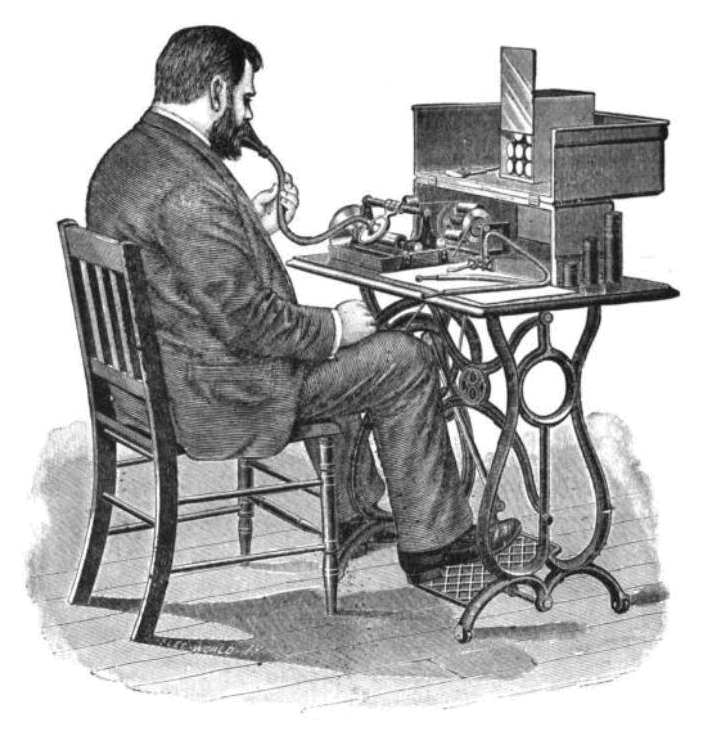
PA and Cinema 1930s
The next major application for speakers was the PA systems (“public address”), especially the Cinema, which started around the 1930s. Before that time, sound and pictures could not be combined in a synchronized way (remember silent films?). In the late 1920s and early 1930s, this technical challenge was solved, which made loudspeakers for this application necessary. Around this time, the first large loudspeakers were built to supply multiple people with audio signals [7, p. 334]. A crucial predecessor of this application was the development of the first amplifiers, which made sure the recorded signal was amplified to balance out the inefficient signal chain and overall create a louder output than the input.
Vinyl and the LP (consumer usage) 1950s and 1960s
While the Gramophone already played from a turning disc or cylinder, it took until the middle of the 20th century for this medium to be adequately developed for consumer usage (mainly regarding playtime). This was also the first real possibility for ordinary people to have recordings of music at home. It basically started the consumer market for audio products. Especially the LPs (long play) records, which could contain up to about 45 minutes of playtime (both sides combined), reached lengths that set the typical album length, even for releases nowadays.
Mobile devices 1990s
With the development of mobile devices, first tape recorders (in the 80s), later mobile CD players, and then MP3 players, up to the integrated player function in the mobile phone, the need for earphones and headphones increased dramatically. Before that time, headphones were only used by professionals (music production, broadcast, pilots, etc.), and customers for silent listening at home, which represented a much smaller market.
This trend marks another very critical tipping point in the history of speakers. Up to this point, most loudspeakers were created to excite a whole room (or hall), but with the usage of mobile devices, the wearer needed the loudspeakers to play just for them, reducing their size to earphones and headphones. Due to the size and the higher wear and tear, the number of required speakers increased a lot. Miniaturization became very important, especially in combination with the continuous improvements in the players (tape, MP3, mobile phone).
21st Century Speakers
Continuing to turn the time forward, more functions were added to mobile devices. The additional components raised the demand for ultra-miniature speakers with reduced power consumption. A big stepping stone was in 2016, when Apple introduced the AirPods. Although those were not the first TWS (True Wireless Stereo—wireless connections between the earphone pieces), they definitely had the highest direct impact on the market. This not only increased the demand for micro-speakers, but also placed more stringent requirements in terms of size and power consumption.
MEMS microphones
Looking at the acoustic counterparts, the microphones, a clear trend towards further miniaturization and, subsequently, a higher number of devices can be seen. Multiple microphones per mobile phone and TWS are standard to improve the audio quality of the voice pick-up. MEMS microphones are especially successful in this type of application. Instead of the historically prevailing electret microphones, they allow for reflow soldering. This made mass production, in the end, easier and cheaper.
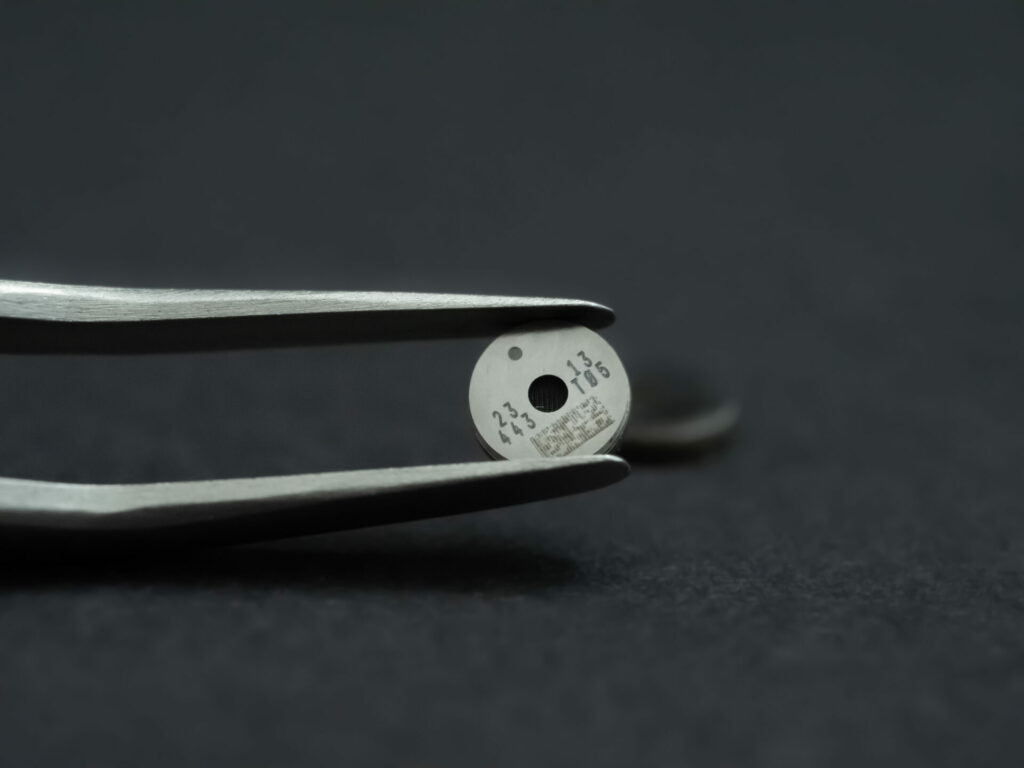
MEMS speakers
At USound, we are sure that the same trend that has led to the success story of MEMS microphones will also apply to MEMS speakers. Starting with the high miniaturization possibilities, the extreme scaling effects, leading to low cost and high production capability, all the way to reflow-solderability, pose strong features of this technology. Additionally, our speakers offer high frequency reproduction capabilities that extend beyond the typical audio bandwidth of 20kHz, to high 40kHz (Hi-Res) and beyond, enabling the combination of audio and ultrasound applications within one device.
There is a clear interest in new technologies, different sound characteristics, and further miniaturization that the MEMS speakers are and will be able to deliver now and in the future. We at USound are at the forefront of this development and are sure that the approx. 150 years of speaker history have been building up to finally be ready for the next generation, the MEMS speakers.
References
[1] A. G. Bell, ”Improvement telegraphy”, U.S. Patent 174,465, Mar. 7, 1876.
[2] N. Baldwin, “Telephone-Receiver”, U.S. Patent 905,781, Dec. 1, 1908.
[3] H. Fener, “Hearing-Aid Sound Transducer”, U.S. Patent 3,076,062, Jan. 29, 1963.
[4] B. Gehlshoj, Electromechanical and Electroacoustical Analogies. Academy of Technical Sciences, Copenhagen, 1947.
[5] F. A. Firestone, A new analogy between mechanical and electrical systems. J. Acoust. Soc. Am., vol. 4 (3), pp. 249–267, 1933.
[6] A. G. Bell, ”Improvement in transmitters and receivers of electric telegraphs”, U.S. Patent 161,739, Apr. 6, 1875.
[7] D. Self, Audio Engineering Explained, Oxford, UK: Elsevier, 2010.

About the author
Jakob Spötl is the Head of Acoustics at USound, where he drives innovation in MEMS audio technology. With a solid background in acoustic engineering and more than a decade of experience in the MEMS audio industry, Jakob plays a crucial role in shaping USound’s technological advancements. LinkedIn

